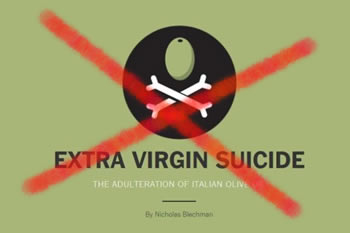Il New York Times rettifica sulle vignette sull’olio italiano

Gli errori, le inaccuratezze e le generalizzazioni dei giornalisti americani rischiavano (e rischiano) di danneggiare uno dei settori di massima eccellenza della nostra regione e del nostro paese.
Ecco la rettifica ufficiale del quotidiano statunitense:
“A graphic last Sunday about adulterated olive oil sold as “extra virgin” contained several errors. Olives that are used in substandard oil are typically milled days, weeks or even months after being picked — not “within hours.” The graphic conflated two dubious practices that can be found in parts of the olive oil industry. Some unscrupulous producers mix olive oil with soybean or other cheap oils, while others mix vegetable oils with beta carotene and chlorophyll to produce fake olive oil; the two practices are not always combined. Olive oil bottled in Italy and sold in the United States may be labeled “packed in Italy” or “imported from Italy” — not “produced in Italy” — even if the oil does not come from Italy. (However, the source countries are supposed to be listed on the label.) A 2010 study by researchers at the Olive Center at the University of California, Davis, found that 69 percent of imported olive oil labeled “extra virgin” did not meet, in an expert taste and smell test, the standard for that label. The study suggested that the substandard samples had been oxidized; had been adulterated with cheaper refined olive oil; or were of poor quality because they were made from damaged or overripe olives, or olives that had been improperly stored or processed — or some combination of these flaws. It did not conclude that 69 percent of olive oil for sale in the United States was doctored. Finally, the graphic incorrectly cited Tom Mueller, who runs the blog Truth in Olive Oil, as the source of the information. While Mr. Mueller’s blog and other writings were consulted in preparation of the graphic, several of his findings were misinterpreted.”


